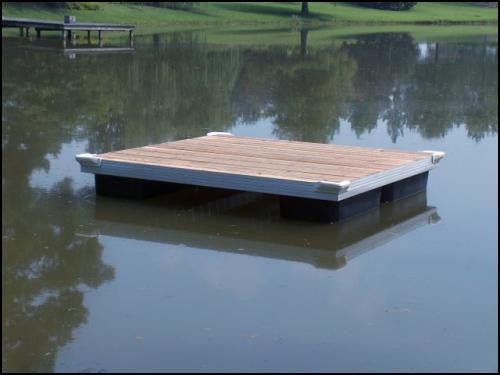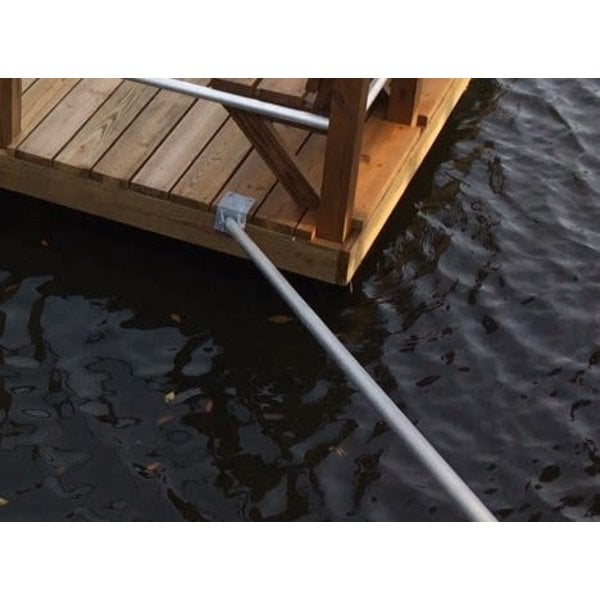Floating Docks: The Smart Choice for Modern Waterfront Living and Recreation
Floating Docks: The Smart Choice for Modern Waterfront Living and Recreation
Blog Article
Produce the Perfect Docking Service With Floating Docks
Floating docks existing a flexible option for a selection of maritime needs, adapting flawlessly to varying water levels and diverse vessel types. Their modular nature allows for rapid setup and moving, yet the choice of appropriate products and style attributes is essential for ensuring both performance and aesthetic appeal. As we explore the crucial elements that add to the performance of floating docks, numerous vital aspects relating to stability and upkeep will arise, questioning about exactly how to enhance your docking experience. The succeeding conversation will light up these crucial factors to consider.

Advantages of Floating Docks
Floating docks deal countless advantages that make them an optimal option for different maritime applications. Unlike repaired docks, floating docks rise and fall with the tide, making certain constant ease of access for vessels.
Additionally, floating docks are generally much easier and quicker to install contrasted to conventional fixed frameworks. Their modular design enables for simple setting up and disassembly, assisting in maintenance and relocation when necessary. This flexibility is especially beneficial for short-term applications or in atmospheres where problems might alter.
Floating docks also have a tendency to be more eco-friendly, as they lessen disruption to the seabed and bordering marine environments. Their resilient nature decreases the threat of damages to aquatic life, advertising a much healthier environment. These docks can be customized to suit various vessel sizes, making certain that they fulfill specific operational requirements.
Ultimately, the combination of adaptability, convenience of setup, and environmental considerations makes floating docks a highly effective option for a large range of maritime demands.
Choosing the Right Products
Picking the proper materials for floating docks is important to make sure security, toughness, and long life. The choice of materials directly affects the dock's performance in numerous environmental problems, including direct exposure to water, sunlight, and prospective wear from aquatic web traffic.
Common materials made use of for floating docks include light weight aluminum, timber, and high-density polyethylene (HDPE) Light weight aluminum is light-weight, corrosion-resistant, and requires marginal upkeep, making it an outstanding option for durability. Its preliminary expense can be higher compared to various other products.
Wood, while visually appealing and providing a traditional look, can be at risk to rot and pest damage if not correctly treated. Using pressure-treated wood or normally resilient species like cedar or redwood can mitigate these issues.
HDPE is a popular choice due to its resistance to UV rays and chemicals, together with being ecologically friendly. floating dock builder. It is readily available and light-weight in numerous colors, permitting personalization
Eventually, the ideal product selection will certainly depend on certain requirements, consisting of budget, preferred appearances, and ecological factors to consider. Cautious evaluation of these aspects will certainly bring about a effective and durable floating dock solution.
Style Factors To Consider for Stability
When developing floating docks, making sure security is a basic aspect that can considerably influence their capability and safety and security. Security in floating dock style is influenced by different elements, consisting of buoyancy, weight circulation, and the setup of elements.
Weight circulation is crucial; evenly distributing loads across the dock prevents tilting and enhances security. This can be attained via calculated placement of docking equipment, such as cleats and fenders, as well as proper spacing of floats. Additionally, the dimensions of the dock should be attentively intended. Bigger layouts can use boosted security, especially in rough water conditions, while longer docks might call for added assistances to protect against drooping.
An additional vital factor to consider is the ecological impact, consisting of wave action and wind. Incorporating functions such as sidewalls or skirting can assist minimize the impacts of environmental forces, maintaining security in unfavorable problems. Ultimately, a combination of thoughtful style, material option, and understanding of environmental elements will generate a drifting dock that meets both stability and safety requirements.
Installation Tips and Techniques

Next, secure the required authorizations and comply with regional laws, which may determine installment methods and ecological factors to consider. Involve a qualified service provider experienced in floating dock setups if required. Usage high-quality products made for aquatic atmospheres to boost longevity and long life.
When placing the dock, align it parallel to the coastline to assist in simple accessibility. Guarantee that the anchoring system is robust, utilizing cinder block or helical anchors to support the dock versus web link wind and wave activity. It's essential to represent seasonal water degree fluctuations, including possible ice movement in colder environments.
Throughout the installment, confirm the dock's floatation and stability before settling the anchoring. Consistently inspect the installation for any type of indications of wear or damages. By adhering to these pointers and strategies, you can accomplish a protected, functional, and aesthetically pleasing floating dock setup that fulfills your requirements.
Upkeep and Care Guidelines
Caring and maintaining for floating docks is critical to extending their lifespan and making sure risk-free usage. Routine assessments must be performed to identify any indications of wear, damages, or aquatic development. Look for cracks, loose fittings, or stained areas on the dock's surface area, as these concerns can endanger architectural honesty.
Cleaning is necessary. Make use of a pressure washer to remove algae, barnacles, and particles, which can accumulate in time. For stubborn growth, think about eco-friendly cleansing representatives that will not harm aquatic life.
In addition, examine the mooring lines and anchors frequently to guarantee they are safe and secure and cost-free from deterioration. Replace any type of frayed or damaged lines immediately to preserve security.
During extreme weather condition, such as tornados or freezing problems, take preventive procedures. Safeguard the dock with additional mooring lines and, if feasible, get rid of any type of detachable components to stop damages.
Final Thought
In verdict, the implementation of floating docks offers a effective and functional docking option suitable Visit Website for numerous maritime applications. With proper installment and routine upkeep, floating docks can offer reliable and efficient docking experiences for a broad array of vessels.
As we explore the crucial aspects that contribute to the efficiency of floating docks, numerous essential variables concerning security and maintenance will arise, elevating inquiries regarding just how to optimize your docking experience. Unlike repaired docks, floating docks rise and autumn with the trend, ensuring constant availability for vessels.When making floating docks, ensuring stability is a fundamental aspect that can dramatically influence their functionality and safety. Stability in floating dock design is influenced by different aspects, consisting of buoyancy, weight circulation, and the setup of parts. Inevitably, a mix of thoughtful layout, product selection, and understanding of environmental factors will yield a floating dock that meets both security and safety and security needs.
Report this page